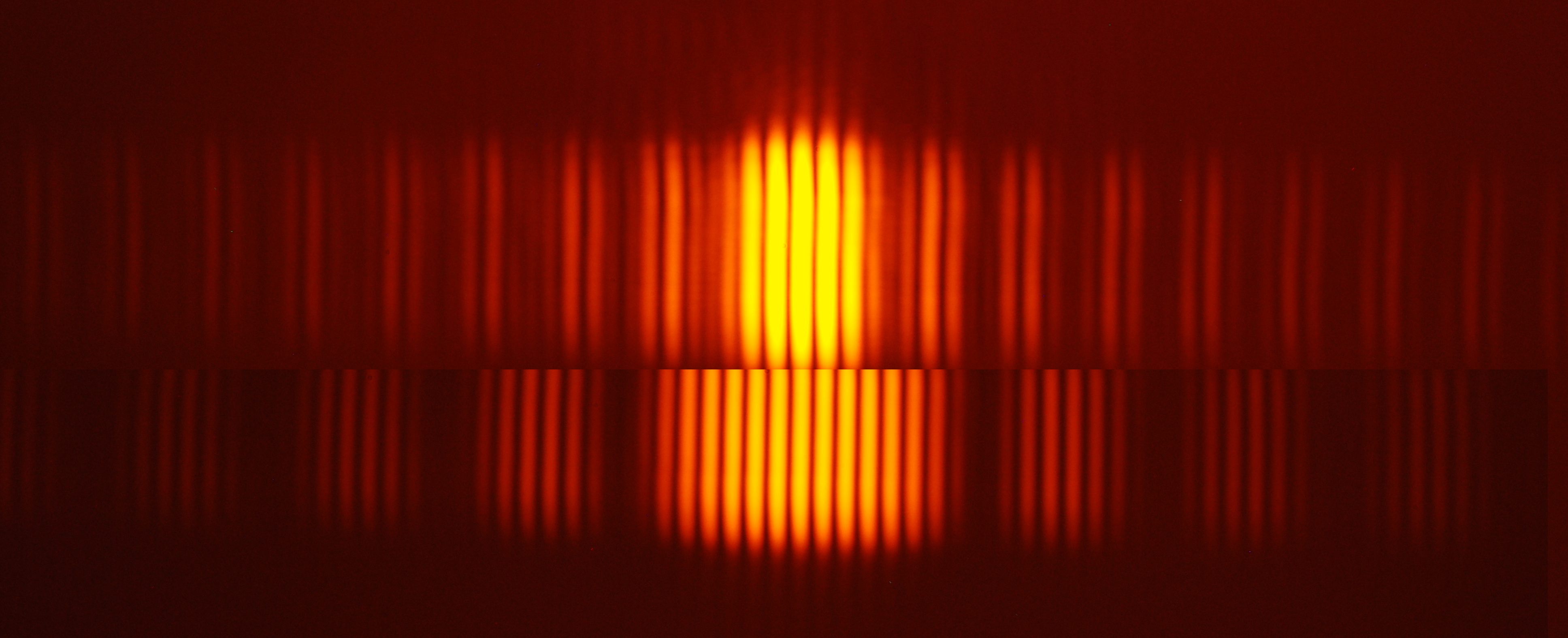
Scientists have finally performed a famous experiment described by physicist Richard Feynman that captures the mysterious quantum properties that allow electrons to behave like either waves or particles.
The findings, published Wednesday (March 13) in the New Journal of Physics, don't upend any fundamental laws, but confirm the results of a classic double-slit experiment once thought too challenging to perform.
"It confirms quantum mechanics," said study co-author Herman Batelaan, a physicist at the University of Nebraska. "We all know it's supposed to work that way, but to actually go out there and do it is a valuable thing."
From 1961 to 1963, Nobel prize-winning physicist Richard Feynman gave a series of electrifying lectures on quantum mechanics, revealing the strange laws that govern the world of the very small.
In one, he described a thought experiment to illustrate how electrons can behave like waves or particles.
The setup was simple: A gun shoots single electrons at a wall with two tiny slits that can be opened or closed. Once they pass through the slit, or slits, the electrons hit a detector. [Twisted Physics: 7 Mind-Blowing Findings]
Feynman predicted that when just one slit was open, the electrons would behave as particles. But when both slits were open, the electrons would create a characteristic pattern of light and dark fringes on the detector formed by wave interference. In essence, the peaks of one wave would sometimes add to the peaks of others, creating bright patches, while at other places the peaks and troughs would overlap, creating dark areas.
Sign up for the Live Science daily newsletter now
Get the world’s most fascinating discoveries delivered straight to your inbox.
In the lecture, Feynman said the setup, with tiny gaps opening and closing at will, would be too hard to create.
"You have to control this at a small scale," Batelaan told LiveScience.
But over the last 20 years, the technology to create the setup has emerged, and the research team realized all the elements were in place to recreate the famous experiment.
To do so, the team fired an electron beam that could shoot individual electrons at a gold-silicon membrane wall with two 62 nanometer-wide slits. To open and close the slits, the team used an piezo-electric motor to move a 10 micrometer-tall mask behind the slits up and down.
It's no surprise the team's results match those predicted by the brilliant physicist.
But while the new experiment may not raise questions about quantum mechanics, it's important to check that these fundamental laws are behaving as physicists expect in many different setups, Batelaan said.
"Something that's so fundamental, you want to overturn every stone," Batelaan said.
Follow Tia Ghose on Twitter @tiaghose. Follow LiveScience @livescience, Facebook & Google+. Original article on Live Science.

Tia is the managing editor and was previously a senior writer for Live Science. Her work has appeared in Scientific American, Wired.com and other outlets. She holds a master's degree in bioengineering from the University of Washington, a graduate certificate in science writing from UC Santa Cruz and a bachelor's degree in mechanical engineering from the University of Texas at Austin. Tia was part of a team at the Milwaukee Journal Sentinel that published the Empty Cradles series on preterm births, which won multiple awards, including the 2012 Casey Medal for Meritorious Journalism.









